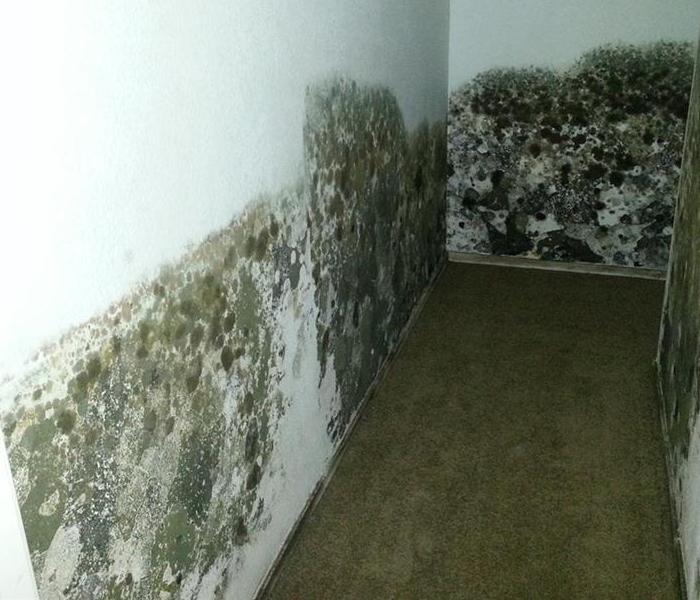Recent Mold Remediation Posts
The Smell of Your Home May Be Making You Sick | SERVPRO® of Hershey/Harrisburg East (717)-533-FIRE
5/10/2023 (Permalink)
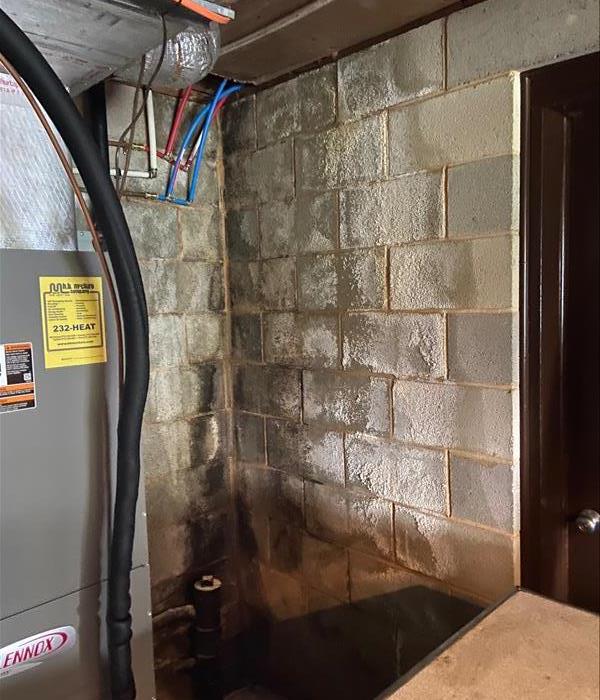 Basement wall with possible mold growth and/or moisture.
Basement wall with possible mold growth and/or moisture.
Dr. Joan Wennstrom Bennett of the Plant Biology and Pathology points-out that VOCs from mold may be an important contributor to Parkinson’s disease. As noted in a recent article in Discover Magazine, Bennett's discovery could possibly explain a long-standing mystery: Every known toxin that causes Parkinson’s is man-made and relatively recent, but Parkinson’s has existed for thousands of years. Bennett says that a variety of natural neurotoxins may lead to the disease.
At SERVPRO of Hershey / Harrisburg East - we work closely with a Council-Certified Indoor Environmental Consultant (CIEC) to assist us in assessing mold damage in your home or office because the full extent of the impact on the air quality can not be assessed by visual inspection only. Once the consultant has defined the extent of the damage - we get to work on remediation.
The consultant then does a post remediation assessment to confirm that mold levels in the building are normal before we say we are done.
Conditions in Hershey / Swatara Might Be Right For Mold
11/12/2019 (Permalink)
It’s estimated that more than 1 million types of mold exist, yet less than 10 percent have actually been named. This means mold is very common in both indoor and outdoor environments. While mold and humans can sometimes co-exist without issue, there are certain species of mold that can cause health effects for some people.
If the right conditions exist, mold will grow. Those conditions include:
- Water - Different mold types require varying amounts of liquid before growth begins.
- Temperature - Normal indoor temperatures will promote mold growth.
- Time - Initial mold colonizers can take hold within one day after being exposed to an adequate water supply.
Mold growth can occur in any home, so it’s important to keep an eye out for situations that might promote mold activity. Roof/chimney leaks, wet basements, or condensation from ducts that dampen surrounding insulation are just a few examples of issues that make a house a prime target for mold growth.
If you suspect mold in your home, call SERVPRO of Hershey / Swatara to assess the situation. We have the knowledge, tools and track record to effectively remediate mold in your home or business.
If you suspect mold, call us today at (717) 561-1404
What to Do:
- Stay out of affected areas.
- Turn off the HVAC system and fans.
- Contact SERVPRO of [[Franchise Name]] for mold remediation services.
Choosing a Mold Contractor | SERVPRO® of Hershey/Harrisburg East (717)-533-FIRE
8/15/2019 (Permalink)
Many people have a hard time trying to find a reliable mold contractor here in Central Pennsylvania. Here are a few tips to help you wade through the myriad of mold remediation listings, and hopefully find one that will do the job correctly and for the right price,
Check out the reputation of the company - do some research on-line.
Are they insured for what they do? Because of the litigation associated with mold there are many insurance companies who will not insure against mold. It is common for commercial liability insurance to exclude pollution that apply to mold. Those that do usually require high premiums to offset the risk they incur. As a result, companies that advertise themselves as remediation companies may not be properly insured against risks. You ask specifically about pollution coverage because it will be a special coverage of the liability insurance.
Are they trained? Pennsylvania does not have any special certification requirements. However, that does not mean that the technicians performing the work are not trained. The company you use should have an employee training and certification program.
What is the planned job process? Mold should be contained, and then removed. Generally accepted guidelines for mold remediation recommends that any mold remediation in excess of 10 square feet should be isolated with a containment to prevent spread of mold spores. A HEPA filtered air scrubber should be used inside the containment, and it is most effective if it is set up to provide negative air pressure (meaning air is being sucked into the containment so that mold spores can’t leak out). Mold infested porous material like sheetrock, carpet, and carpet pad should be removed and discarded (bagged for removal to prevent spreading the spores when being transferred out of the containment). The surfaces of non-porous material should be thoroughly cleaned and disinfected. For example, wood framing can be sprayed with an EPA approved disinfecting solution, then wiped and physically abraded with a wire brush or sandpaper to remove mold. All surfaces inside the containment should then be thoroughly HEPA vacuumed, and wiped using an EPA-approved disinfecting solution. Finally, no mold remediation job would be complete without post-remediation testing performed by a certified independent laboratory. There are variations of the job process, especially if the mold-infested materials are still wet. If so, you should expect that after setting up the containment, the mold contaminated porous material will be removed, the non-porous wet mold –infested structure will be cleaned of mold as much as possible and dried, and then remediated to completion. Testing generally involves taking an air sample inside the containment area and comparing the results to an air sample drawn outside the house or building. Finally, the remediation company should have its workers properly protected. They should wear protective coveralls, gloves, and a HEPA filtered respirator.
How do they determine pricing? Most mold remediation jobs being performed as part of an insurance claim should be estimated using an estimating software system called Xactimate. Almost all insurance companies expect Xactimate to be used, and your mold remediation company should be familiar with it, and capable of submitting the estimate in this format. If the job is not covered by insurance you can still ask to see an Xactimate estimate for the job. The Xactimate pricing list is based on monthly surveys performed in the local area, so the pricing for labor and materials are the average price for the job being performed. Any quote provided to you that is not consistent with an Xactimate estimate (either too high or too low) should raise flags and be investigated. They should provide you with a detailed list of charges.
Does the company stand behind its work? The company doing remediation should offer a guarantee on workmanship for the area being remediated.
- Beware of scare tactics - Mold can be a scary problem but many people exagerate the health impact. Do your own research first - don't let someone scare you with phrases like "You have toxic black mold". Mold contamination can present significant health effects - but don't let remediators scare you into signing a contract.
Whenever you discover that you have a mold problem, call SERVPRO of Hershey/Swatara. We promise that you will get an honest assessment of the problem, and we will ensure that you will be satisfied with our work.
Professional Mold Remediation | SERVPRO® of Hershey/Harrisburg East (717)-533-FIRE
9/14/2016 (Permalink)
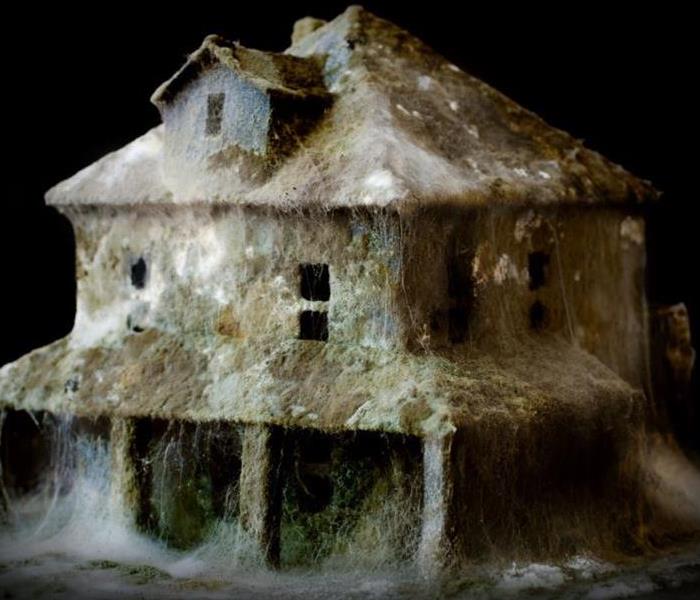 | SERVPRO® of Hershey/Harrisburg East (717)-533-FIRE
| SERVPRO® of Hershey/Harrisburg East (717)-533-FIRE
Understanding Mold
Microscopic mold spores exist almost everywhere, outdoors and indoors, making it impossible to remove all mold from a home or business. Some restoration businesses advertise “mold removal” and even guarantee to remove all mold, which is a fallacy. Consider the following mold facts:
- Mold is present almost everywhere, indoors and outdoors.
- Mold spores are microscopic and float along in the air, and may enter your home through windows, doors, or AC/heating systems or even hitch a ride indoors on your clothing or on a pet.
- Mold spores thrive on moisture. Mold spores can quickly grow into colonies when exposed to water.
- Before mold remediation can begin, any sources of water or moisture must be addressed. Otherwise, the mold may return.
- Mold often produces a strong, musty odor and can lead you to possible mold problem areas.
- Even higher-than-normal indoor humidity can support mold growth. Keep indoor humidity below 45 percent.
Common Mold Misconceptions
With sensational news stories and misleading advertising, you can easily understand why so many people are misinformed about indoor mold. Learn the facts about mold and the mold remediation process.
Why Choose SERVPRO of Hershey?
We are dedicated to responding immediately when you contact them. A fast response lessens the damage, limits further damage, and reduces cost.
We Are Highly Trained Mold Remediation Specialists
We specialize in water and mold damage restoration, the cornerstone of our business. Our Professionals have the training and expertise to safely handle any mold situation.
- Applied Microbial Remediation Specialist
- Water Damage Restoration Technician
- Applied Structural Drying Technician
We Use Advanced Mold Remediation Techniques and Equipment
We use advanced equipment to detect the source of water feeding the mold. Next, we isolate the affected area using a negative air pressure chamber and perform mitigation work according to established professional standards per IICRC 520.
Call us at 717-561-1404 if you suspect you may have a mold problem in your home or business. We can help!
Mold Damage Remediation - Harrisburg, PA | SERVPRO® of Hershey/Harrisburg East (717)-533-FIRE
3/27/2016 (Permalink)
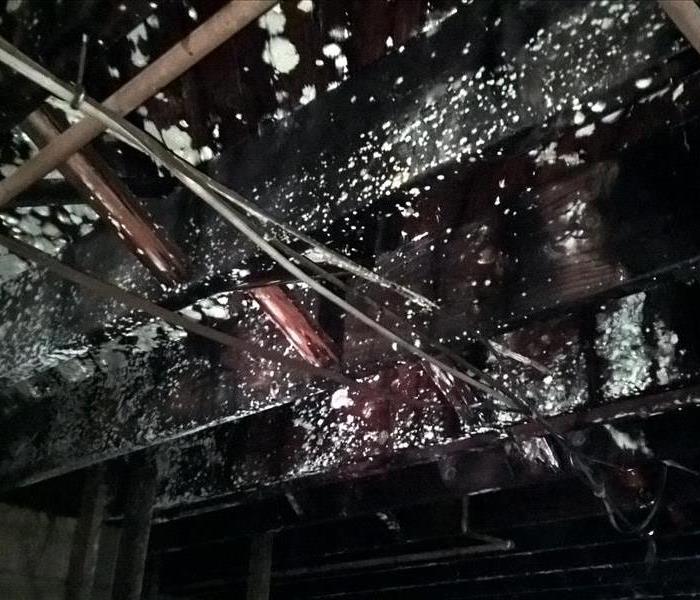 | SERVPRO® of Hershey/Harrisburg East (717)-533-FIRE
| SERVPRO® of Hershey/Harrisburg East (717)-533-FIRE
SERVPRO of Hershey/Swatara is who you should call if you suspect you may have mold in your home or business.
Mold can produce allergens and irritants and has the potential to cause other health effects. Mold can spread quickly through your home or business in as little as 48 hours. If you suspect that your home or business has a mold problem, we can inspect and assess your property. If mold is found, we have the training, equipment, and expertise to remediate your mold infestation.
Learn more about mold and what to do until help arrives by reviewing these mold damage tips.
If You See Signs of Mold,
Call Us Today – (717) 561-1404
Understanding Mold
Some restoration companies advertise “mold removal” and may even guarantee to remove all mold. This is a fallacy because removing all mold from a house or business is impossible; microscopic mold spores exist almost everywhere, both indoors and outdoors. Here are the facts:
- Mold is present almost everywhere, indoors and outdoors.
- Mold spores are microscopic and float along in the air and may enter your home through windows, doors, or AC/heating systems or even hitch a ride indoors on your clothing or a pet.
- Mold spores thrive on moisture. Mold spores can quickly grow into colonies when exposed to water. These colonies may produce allergens and irritants.
- Before mold remediation can begin, any sources of water or moisture must be addressed. Otherwise, the mold may return.
- Mold often produces a strong, musty odor and can lead you to possible mold problem areas.
- Even higher-than-normal indoor humidity can support mold growth. Keep indoor humidity below 45 percent.
Why Choose SERVPRO of Hershey / Swatara?
We’re Faster to Any Size Disaster
A minor mold problem can quickly become a major infestation if left untreated. We can start the remediation process immediately after you contact us. A faster response lessens the mold damage, limits additional damage, and reduces the remediation cost.
Learn More
We’re Highly Trained Mold Remediation Specialists
We are trained mold damage specialists who get started quickly to get your home or business back to normal, with specific training and certifications to handle your restoration needs.
- Applied Microbial Remediation Specialist
- Water Damage Restoration Technician
- Applied Structural Drying Technician
Learn More
We Use Advanced Mold Remediation Techniques and Equipment
We invest in the latest equipment and ongoing mold remediation training because it helps us restore your home or business quickly and effectively. We will isolate the affected area using physical barriers and a negative air pressure chamber.
Learn More
The Mold Remediation Process
Every mold infestation is different, from the amount of mold to the types of materials affected. Each scenario requires a unique solution, but the general process stays the same. The steps listed below illustrate our process for a “typical” mold remediation infestation:
- Emergency Contact - (717) 561-1404
- Inspection and Mold Damage Assessment
- Mold Containment
- Air Filtration
- Removing Mold and Mold-Infested Materials
- Cleaning Contents and Belongings
- Restoration
Common Mold Misconceptions
It’s easy to understand why many people struggle to grasp the facts and issues surrounding indoor mold because sensational news stories and advertising cloud and obscure the real issues. Educate yourself with the facts about mold and learn about the mold remediation process.
"Toxic Black Mold" | SERVPRO® of Hershey/Harrisburg East (717)-533-FIRE
2/11/2015 (Permalink)
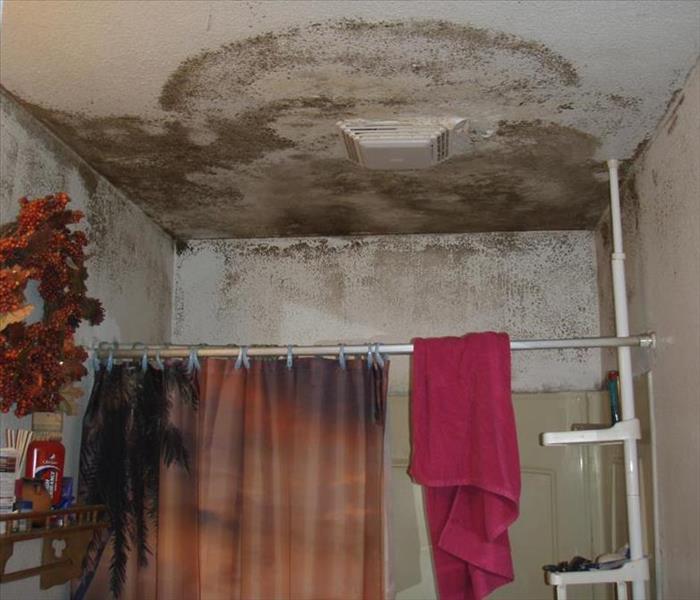 | SERVPRO® of Hershey/Harrisburg East (717)-533-FIRE
| SERVPRO® of Hershey/Harrisburg East (717)-533-FIRE
Insights on so the called "Toxic Black Mold from Eric Mercer of Aether Assesments http://www.aetheriaq.com/
" Before you start thinking that we are am jumping on-board with the media or other companies that use scare tactics to drum up business, the article title was merely meant to get your attention! You will never see me write about toxic black mold on my website or in a report, despite the power it seems to have in getting people to open their wallets.
You see, there are actually many things wrong with that label. One is that molds themselves are not toxic. Under certain conditions they produce mycotoxins, but the actual research into doses and health effects is not very clear. Second, even though it has become synonymous with Stachybotrys, many molds can appear black at various stages of their life cycle.
Don't get me wrong - I have no doubt that reactions to mold and mold by-products exist and I am not down-playing any potential health issues that people have experienced, it is just that it is not feasible to quantify this reaction and exposure. As a matter of fact I routinely experience multiple physical symptoms during an assessment. In addition, mold is problematic as it is well documented that it is allergenic alive or dead, degrades building materials, and is indicative of an underlying water intrusion issue that needs to be corrected.
So, with some exceptions your concern should be why do you have mold growth and not be so much whether you have toxic black mold - After all, if I were to provide an assessment and told you that Stachybotrys was not identified, but that the predominant genera appeared to be Penicillium or Cladosporium would you be content to leave that nice fuzzy growth on your walls? Of course not. That would be like saying you have a Pit Bull biting one leg and a Doberman biting the other, but you are only worried about getting rid of the Pit Bull because you have heard their bite is a little worse!
Determining the predominant types of mold present can provide useful information in certain situations, but will typically not alter the recommendations for corrective actions and remediation procedures. Therefore, I would recommend that you recognize that ANY type of mold growth on building materials is a potential signal that a deficiency is present that needs to be identified, corrected, and remediated in order to return your indoor space to normal fungal ecology..."
At SERVPRO of Hershey Swatara - we are trained and equiped to remediate mold damage, following IICRC guidelines. We proudly serve the Harrisburg area and we will glady provide you with a free estimate for mold remediation.
Mold Basics from the EPA | SERVPRO® of Hershey/Harrisburg East (717)-533-FIRE
11/19/2014 (Permalink)
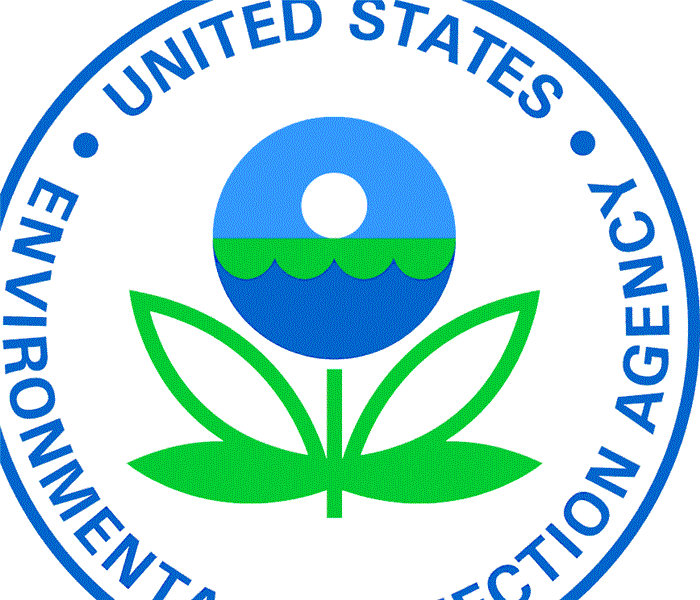 | SERVPRO® of Hershey/Harrisburg East (717)-533-FIRE
| SERVPRO® of Hershey/Harrisburg East (717)-533-FIRE
This course provides an overview of mold prevention and mold remediation. It is based on EPA's voluntary March 2001 guidance document Mold Remediation in Schools and Commercial Buildings. Public health and environmental health professionals who are involved with mold issues may be interested in this course. Building managers, custodians, remediators, contractors, and other professionals who respond to mold problems may also want to refer to this course.
Please note that the course and the document on which it is based provide guidelines; other cleaning and remediation methods may be preferred by some professionals. This course does not cover all situations and all potentially useful methods or techniques. The absence of a method or technique from this course does not indicate or imply that it is not effective. Please consult the Resource List for additional information. A Mold Course (PDF) (77 pp, 550 K, about PDF) of the course, a Mold Image Library, Glossary of Terms and a Knowledge Test are also available.
- These mold guidelines are for damage caused by clean water (not flood water); see the EPA Fact Sheet: Flood Cleanup - Avoiding Indoor Air Quality Problems for flood information.
- Research on mold and on its health effects continues. This course does not describe all of the potential health effects related to mold exposure; it provides only an overview. For more detailed information, consult a health professional or your state or local health department.
- Please note: EPA does not regulate mold or mold spores in the air.
Stachybotrys - "Toxic Black Mold" ???
11/18/2014 (Permalink)
Is Stachybotrys—the Notorious Black Mold or Toxic Mold—Really That Bad?
Written By: Dr. Henry P. Shotwell, CIH
Much media attention has been lavished on Stachybotrys chartarum (a.k.a.:atza). Headlines have screamed “Toxic Black Mold,” “Deadly Black Mold” with many variations on this theme. Is “Stachy” really that bad? Is it really toxic? Is it really deadly?
First off, Stachybotrys came to the public’s attention as a result of a very unusual condition, called Acute Idiopathic Pulmonary Hemorrhage (AIPH) or Pulmonary Hemosiderosis, which was seen in a group of 10 infants living in the Cleveland, OH area. One child died as a result. A preliminary study by the Centers for Disease Control (CDC) suggested that these cases were associated with major water damage to their homes within the 6 months prior to their illness and (not surprisingly) with increased levels of mold in their homes, including “Stachy.”
The question CDC posed (as a Hypothesis to be tested) was: “Were these cases caused by powerful, volatile mycotoxins produced by molds? As a result of their intensive investigation, CDC concluded that a) not all of the cases were properly diagnosed, b) blood tests did not show evidence of exposure to molds or to their waste products (mycotoxins), c) test methods and interpretations were not standardized, d) interpretation of the degree of water damage was not standardized and e) there were no criteria for distinguishing between the mere presence of mold and clinically meaningful exposure.
On top of these, the CDC reviewers also found a) the criteria for determining statistical significance was flawed, b) one of the investigators correctly figured out which of the houses being tested were controls and which were test homes. To be sure of getting “good data,” the investigator took twice as many samples in test homes as in control homes and used aggressive, non-standard methods, not used in the control homes, to generate an artificial environment which was then sampled, and c) that there was no difference in the Stachybotrys levels seen in water damaged houses compared to control houses.
The CDC finally completed their study and came to the following three conclusions: 1) The illnesses seen in Cleveland did not resemble historic accounts of either human or animal illness known to have been caused by Stachybotrys or related fungi. 1) Clusters of this condition have not been reported after other flood events where conditions would have favored the growth of Stachybotrys, and 3) A similar cluster of illness did not involve mold.
So, is “Stachy” really all that bad? Well, it certainly doesn’t seem to have caused the problems in Cleveland which gave Stachy such a bad rap. Is “Black Mold” a problem? Many molds have different colors at different stages of their growth. Stachy is not the only black colored mold. Is Stachy “toxic”? “Toxic Mold” is a phrase coined by the media. It has no scientific meaning. Molds produce waste products from their digestive processes. Some of these by-products are indeed toxic, but the molds that produced them aren’t, including Stachybotrys.
Molds are Nature’s garbage men and recyclers. Aside from the fact that we would have no bread (Brewer’s Yeast) or beer (Saccharomyces cerevesiae) or penicillin (Pencillium chrysogenum) or cheese (Penicillium camemberti P. roqueforti, et.al.). Imagine what would happen if we had no mold to breakdown dead leaves, dead branches, and dead trees? In a few short years, the world would be buried under dead leaves!
How do molds do this? Molds are unlike any other living organisms. They have their own Kingdom; Fungi, and are neither plants (no chlorophyll) nor animals (no mouths or digestive tracts). Since molds have no mouths or digestive tracts, how do they “eat?”
When a mold spore lands on a surface or object that is composed of organic material (wood, paper, orange rind, dirt or dust) that has enough moisture and is in an appropriate temperature range, the spore will “sprout” and begin growing and spreading.
Each individual mold cell secretes digestive enzymes that liquefy the “food” on which the mold cell is lying. Once digested, the “soup” can be absorbed back into the mold cell. There are two kinds of metabolites produced by mold: Primary and Secondary. Primary metabolites are used to provide the energy to drive chemical reactions that cause growth and reproduction. Secondary metabolites, also called mycotoxins are released into the immediate environment to give the mold a competitive edge or to protect itself. The classic example of this was the observation by Dr. Alexander Fleming that a petrie dish containing both Pencillium and bacteria had no bacteria growing in a band surrounding the mold colony. The sterile area had no bacteria because the mold was releasing a secondary metabolite which we called Penicillium, and still use today as an antibiotic to fight certain types of bacterial infection. Mold also produced Streptomycin, Lincomycin, Cephalosporins, Erythromycin and a variety of other antibiotics.
In conclusion, Stachybotrys is no better or worse than many other molds, and the term “Toxic Black Mold” has no scientific basis. Thus, Stachybotrys may be a contributor to allergies and asthma, as are many other molds, but not likely to cause other illnesses or toxic effects.
For more information on Stachybotrys see:
www.ictm.com;www.cdc.gov/mmwr/preview/mmwrhtml/mm4909a3.htm;
www.epa.gov/iedweboo/pubs/hpguide.html;www.doctorfungus.org;
www.emlab.com/s/sampling/culture.html.
Soruce: http://atlenvtexas.com/noblack.html
What To Look For In A Mold Remediation Company | SERVPRO® of Hershey/Harrisburg East (717)-533-FIRE
5/1/2014 (Permalink)
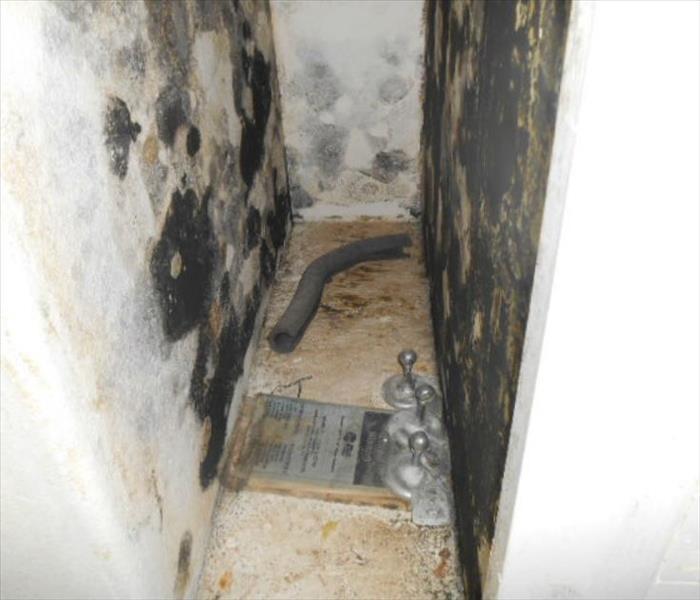 | SERVPRO® of Hershey/Harrisburg East (717)-533-FIRE
| SERVPRO® of Hershey/Harrisburg East (717)-533-FIRE
Many people will have a hard time trying to find a reliable mold remediation company here in Central Pa. It can be overwhelming. Here are a few ideas to help you wade through the myriad of mold remediation company listings, and hopefully find one that you can count on to do the job right, and for the right price.
Check out the reputation of the company - do some research on-line.
Are they insured for what they do? Because of the litigation associated with mold there are many insurance companies who will not insure against mold. It is common for commercial liability insurance to exclude pollution that apply to mold. Those that do usually require high premiums to offset the risk they incur. As a result, companies that advertise themselves as remediation companies may not be properly insured against risks. You ask specifically about pollution coverage because it will be a special coverage of the liability insurance.
Are they trained? Pennsylvania does not have any special certification requirements. However, that does not mean that the technicians performing the work are not trained. The company you use should have an employee training and certification program.
What is the planned job process? Mold should be contained, and then removed. Generally accepted guidelines for mold remediation recommends that any mold remediation in excess of 10 square feet should be isolated with a containment to prevent spread of mold spores. A HEPA filtered air scrubber should be used inside the containment, and it is most effective if it is set up to provide negative air pressure (meaning air is being sucked into the containment so that mold spores can’t leak out). Mold infested porous material like sheetrock, carpet, and carpet pad should be removed and discarded (bagged for removal to prevent spreading the spores when being transferred out of the containment). The surfaces of non-porous material should be thoroughly cleaned and disinfected. For example, wood framing can be sprayed with an EPA approved disinfecting solution, then wiped and physically abraded with a wire brush or sandpaper to remove mold. All surfaces inside the containment should then be thoroughly HEPA vacuumed, and wiped using an EPA-approved disinfecting solution. Finally, no mold remediation job would be complete without post-remediation testing performed by a certified independent laboratory. There are variations of the job process, especially if the mold-infested materials are still wet. If so, you should expect that after setting up the containment, the mold contaminated porous material will be removed, the non-porous wet mold –infested structure will be cleaned of mold as much as possible and dried, and then remediated to completion. Testing generally involves taking an air sample inside the containment area and comparing the results to an air sample drawn outside the house or building. Finally, the remediation company should have its workers properly protected. They should wear protective coveralls, gloves, and a HEPA filtered respirator.
How do they determine pricing? Most mold remediation jobs being performed as part of an insurance claim should be estimated using an estimating software system called Xactimate. Almost all insurance companies expect Xactimate to be used, and your mold remediation company should be familiar with it, and capable of submitting the estimate in this format. If the job is not covered by insurance you can still ask to see an Xactimate estimate for the job. The Xactimate pricing list is based on monthly surveys performed in the local area, so the pricing for labor and materials are the average price for the job being performed. Any quote provided to you that is not consistent with an Xactimate estimate (either too high or too low) should raise flags and be investigated. They should provide you with a detailed list of charges.
Does the company stand behind its work? The company doing remediation should offer a guarantee on workmanship for the area being remediated.
- Beware of scare tactics - Mold can be a scary problem but many people exagerate the health impact. Do your own research first - don't let someone scare you with phrases like "You have toxic black mold". Mold contamination can present significant health effects - but don't let remediators scare you into signing a contract.
Whenever you discover that you have a mold problem, call SERVPRO of Hershey/Swatara. We promise that you will get an honest assessment of the problem, and we will ensure that you will be satisfied with our work.
Mold Cleanup and Restoration | SERVPRO® of Hershey/Harrisburg East (717)-533-FIRE
2/27/2014 (Permalink)
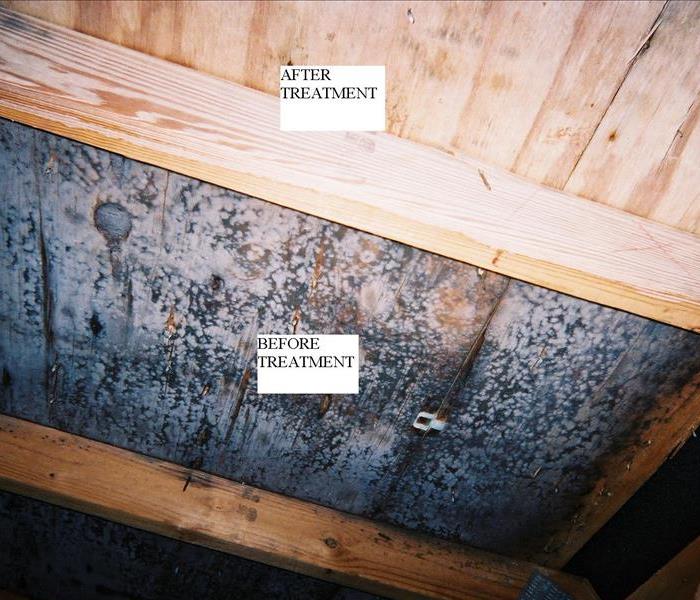 | SERVPRO® of Hershey/Harrisburg East (717)-533-FIRE
| SERVPRO® of Hershey/Harrisburg East (717)-533-FIRE
Excessive amounts of mold and certain types of mold may present health concerns. It is essential for the health of you and your family, as well as the protection of your property, to address the issue and arrange for professionals to conduct mold removal and mold remediation as soon as the presence of mold is identified.
Water damages can cause mold growth in your home or business, therefore it is important to have your water damage cleaned promptly and professionally.
Signs of the presence of excessive mold include:
- The presence of visible mold.
- Strong, musty odors.
- Any evidence of past moisture problems that might have caused undetected mold growth.
- Excessive humidity.
Mold Damage Removal
If you think you might have a mold problem, call SERVPRO of Hershey / Swatara at 717-561-1404.
In most water damage situations, mold growth is something we can safely restore and bring your home or business to preloss condition. The need to address the mold removal can only be determined by an on-site, indoor environmental inspection.
Mold Remediation
In some situations an indoor air quality professional will be required to create a restoration plan for your home. We at SERVPRO of Hershey / Swatra are experienced at carrying out the assigned mold remediation plan and working to make it "Like it never even happened."
The Smell of Your Home May Be Making You Sick | SERVPRO® of Hershey/Harrisburg East (717)-533-FIRE
1/14/2014 (Permalink)
Dr. Joan Wennstrom Bennett of the Plant Biology and Pathology points-out that VOCs from mold may be an important contributor to Parkinson’s disease. As noted in a recent article in Discover Magazine, Bennett's discovery could possibly explain a long-standing mystery: Every known toxin that causes Parkinson’s is man-made and relatively recent, but Parkinson’s has existed for thousands of years. Bennett says that a variety of natural neurotoxins may lead to the disease.
At SERVPRO of Hershey / Harrisburg East - we work closely with a Council-Certified Indoor Environmental Consultant (CIEC) to assist us in assessing mold damage in your home or office because the full extent of the impact on the air quality can not be assessed by visual inspection only. Once the consultant has defined the extent of the damage - we get to work on remediation.
The consultant then does a post remediation assessment to confirm that mold levels in the building are normal before we say we are done.

 24/7 Emergency Service
24/7 Emergency Service



